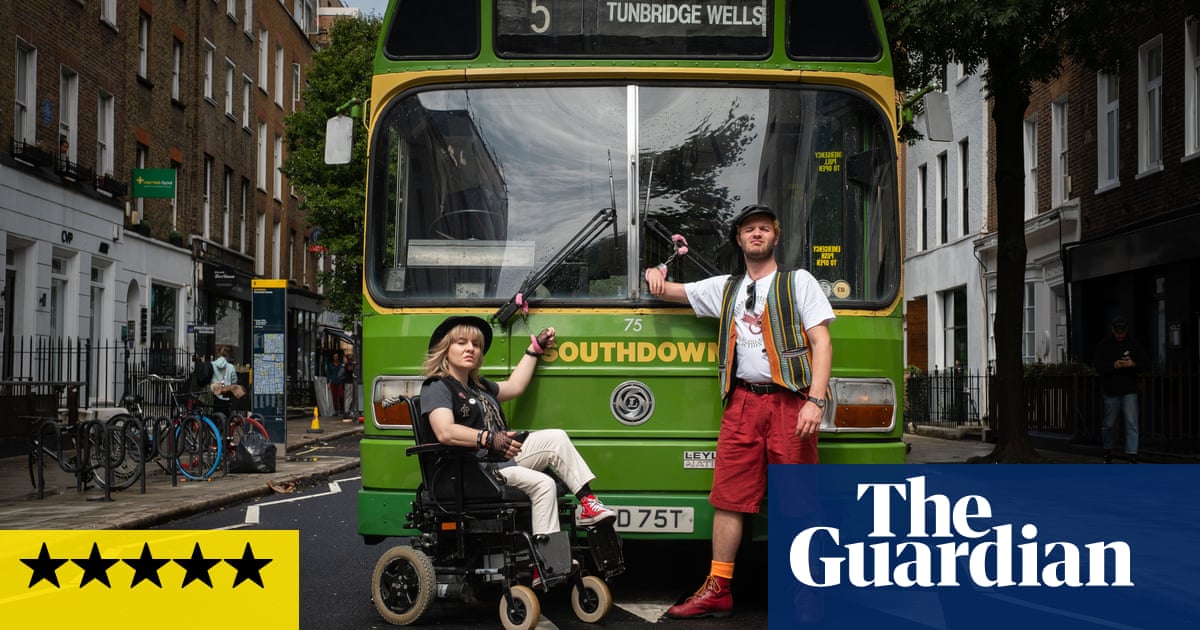Then Barbara Met Alan review –a true 1990s love story of people power in action - 4 minutes read

The word “then” in the title of Then Barbara Met Alan (BBC2) is important. When standup comic Barbara Lisicki meets protest singer Alan Holdsworth in 1990, the lives of disabled people in Britain are continually blighted by blatant discrimination. Then, these two souls find each other. Five years later, protests organised by Lisicki and Holdsworth result in the Disability Discrimination Act 1995. By then Barbara and Alan have also had a child.
Jack Thorne and Genevieve Barr’s rollicking fact-based drama about the couple is a social history document and a love story in equal parts, showing how politics and relationships are both about the power of people allowing their qualities to complement each other. Compromises are argued over. Imperfect but glorious outcomes are shared.
The unstable chemistry that will one day change millions of lives is nailed in the first scene shared by Ruth Madeley as Barbara and Arthur Hughes as Alan. They emerge from a cabaret club, his callipered leg trying to keep up with her speeding wheelchair. When he asks her out for a drink, she rattles cynically through the evening’s likely sequence of events, culminating in a warning that he will need £40 for a cheap hotel, plus £20 for cheap booze to fuel the sex. Undaunted, he asks if she can lend him £60. Barbara’s hard realism and Alan’s freewheeling idealism, forged as their individual responses to physical trauma and social disenfranchisement, are a perfect match – at least at first.
Having quickly moved in together, the two hit upon a grand plan when they have friends over one evening to “hate-watch” the ITV Telethon. This cheesy biennial fundraiser is meant to be television using its clout for good by boosting disability charities, but Lisicki observes that the depiction of people with disabilities as pitiable wretches is harmful: “28 hours of well-intentioned do-gooders dangling us poor crips in front of the nation’s bleeding hearts”. She urges her pals to stop grousing in their living room, step outside to protest against the format and take the show off the air.
Many campaigners might think criticising a charity drive that assists the cause for which they advocate would be ungrateful, but Lisicki knows handouts are not a solution, and that being thankful for the odd sackful of crumbs means accepting the underlying injustice. In a scene utilising Madeley’s gift for confrontational, unblinking erudition, Lisicki shatters the polite protocols of an anodyne TV debate show by mercilessly cutting through an ITV executive’s self-congratulatory waffle. Lisicki and Holdsworth’s campaign group, Block Telethon, soon claims victory – ITV bins the concept after the protests against the 1992 show – and then morphs into the more ambitious Disabled People’s Direct Action Network (DAN).
Now Lisicki and Holdsworth are in their imperial phase and Then Barbara Met Alan takes on the swagger of a rock bio, as the couple swap their comedy/music gigs for public performances of a different kind. Touring the country in a van with the band they have put together, they draw crowds and press coverage by handcuffing themselves to buses and arranging noisy pickets. In lieu of hit singles, they roll out a series of brilliant slogans: “Rights, not charity”; “To boldly go where all others have gone before”; “Piss on pity”; “Nothing about us, without us”. The momentum takes them all the way to Westminster, at which point hard choices have to be made about exactly what legislative change is achievable. Meanwhile, the intensity of their success, and the stress of parenthood, recasts Barbara and Alan’s personality clash as more painful than fruitful.
Then Barbara Met Alan puts us right behind them at every moment, nimbly mixing archive footage – Michael Aspel’s stricken mugging to camera as the Telethon studio is invaded is a highlight – with staged scenes, and using animation, trippy filters and breaking the fourth wall to mirror the chaotic improvisation of a grassroots movement.
The programme isn’t obliged to have a wider significance beyond the struggle of the disabled community: attacks on disabled people by an uncaring state are ongoing, and it is notable that the show has cast a much larger number of performers with disabilities than usual. The sex scene where Hughes and Madeley’s bodies are uncovered and beautiful is a further small but pointed statement.
But at a time when protest, solidarity and collective action are needed more than ever and under unprecedented threat, the lessons about effective activism feel universal. For as long as Barbara and Alan were spurring each other on, they showed everyone how to get things done.
Source: The Guardian
Powered by NewsAPI.org